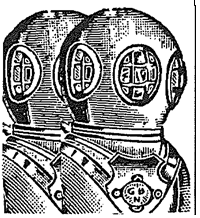George A. Seielstad: Cosmic Ecology: The View from the Outside In; University of California Press, Berkeley.
Gerald S. Hawkins: Mindsteps to the Cosmos; Harper & Row; New York.
When astronaut Bruce McCandless moved outside of the space shuttle Challenger last February and slowly (relatively speaking, that is) moved away from the ship sans umbilical cord, it was a big day for mankind, perhaps on par with that day in 1783 when Pilatre de Rozier ascended in a Montgolfier balloon. The species Homo sapiens has gone a long way in a mere 201 years, yet when the universe as portrayed through words, pictures, and charts in George A. Seielstad’s Cosmic Ecology is taken into account, our grand leap doesn’t amount to even a pitiable tremor. Man has always looked to the stars; Gerald S. Hawkins, in Mindsteps to the Cosmos, essentially argues that man has always had a one-track mind, one that leads out (as Buckminstcr Fuller patiently explained, up and down are silly terms in the big picture). Seielstad moves from the center of the universe–or wherever it was that the Big Bang occurred–to Earth; Hawkins drifts from Earth to Who Knows Where.
It is remarkable that God doesn’t emerge in the vastness that Seielstad tries to describe and explain through astronomy, physics, and other scientific methodologies. We may think ourselves to be Titans (no mere Montgolfier balloons for us), but we are not unlike subatomic particles in this universe–and are still more insignificant if, as some scientists posit, there are an infinity of other universes. Hawkins, in his dance of “mind steps,” which are stages in man’s intellectual growth with regard to his place in the universe, slides right past the Judeo-Christian God to an ultimate point that “could only involve tangible contact with a super-intelligence, the Omnipotent.” Hawkins has spent too much time with stars in his eyes. Seielstad hasn’t spent enough time looking within–and Beyond.

Leave a Reply